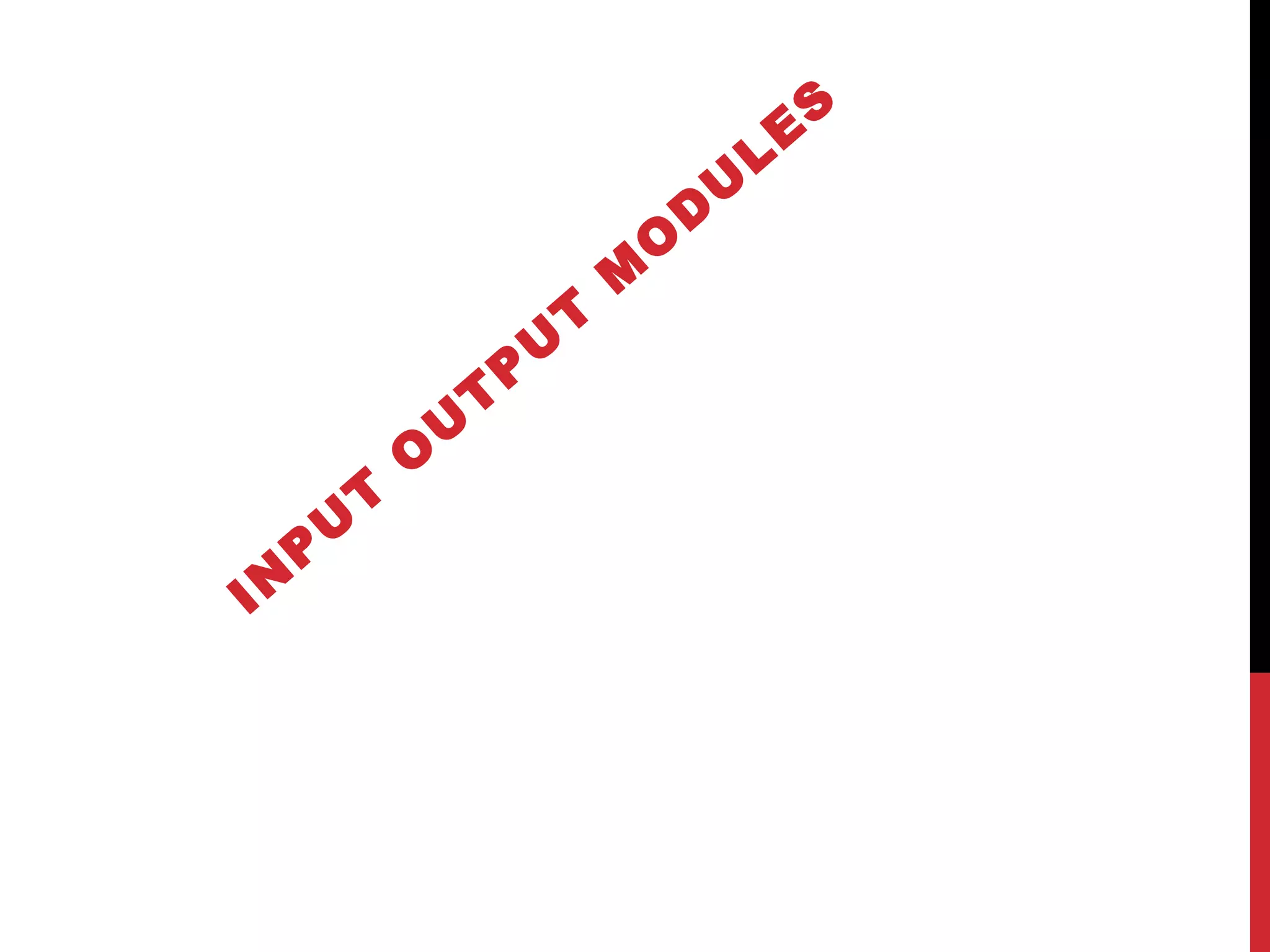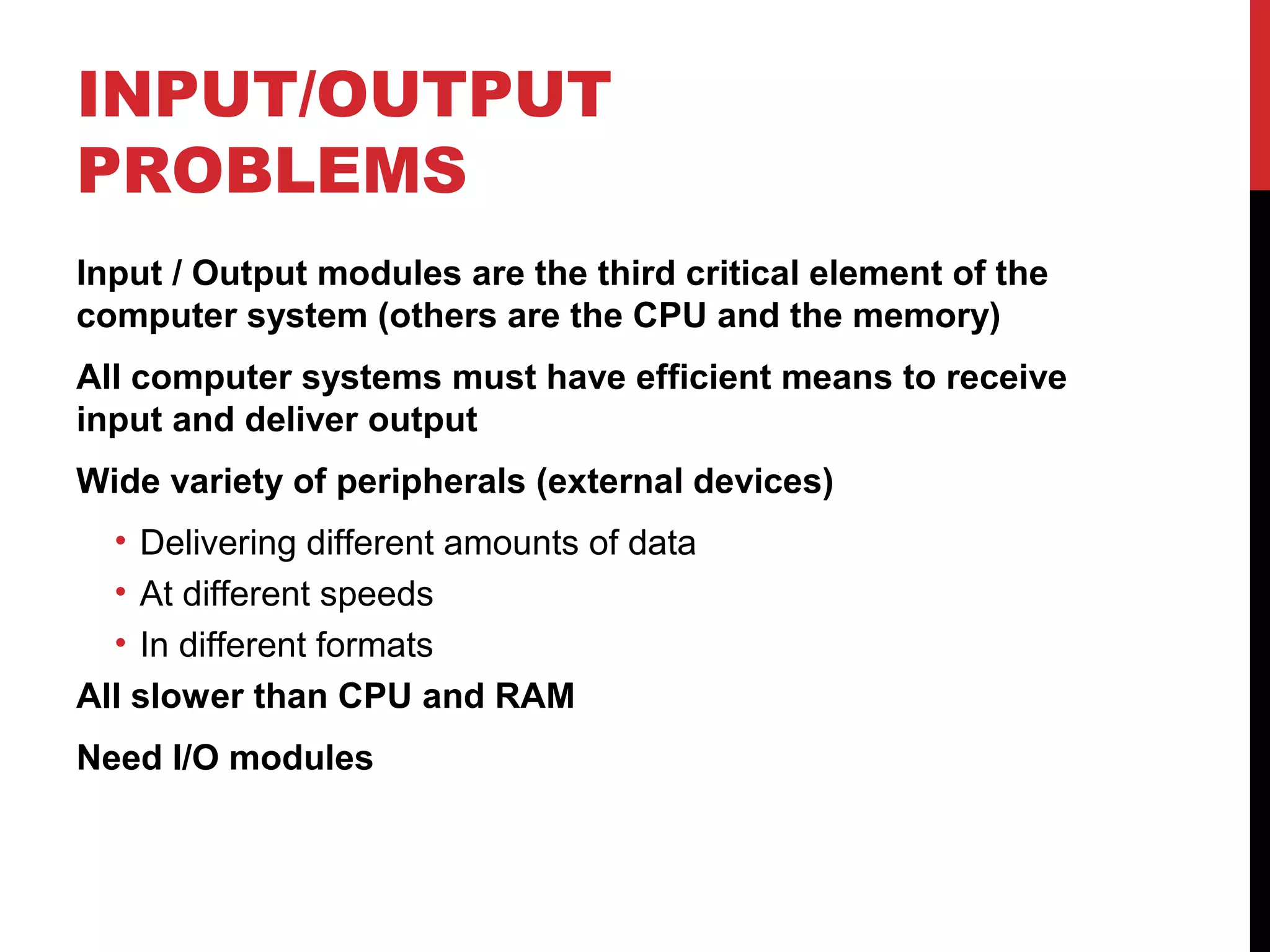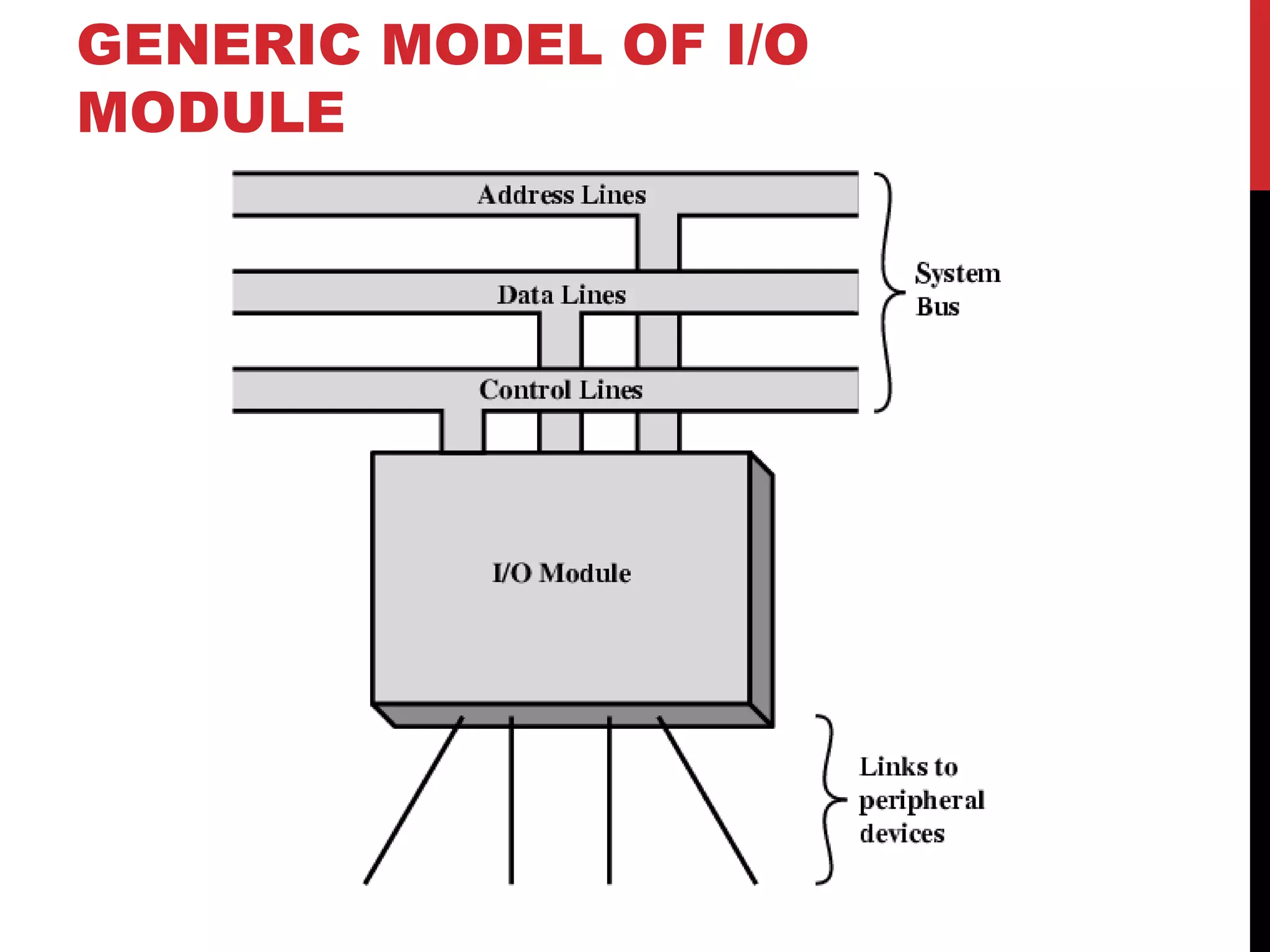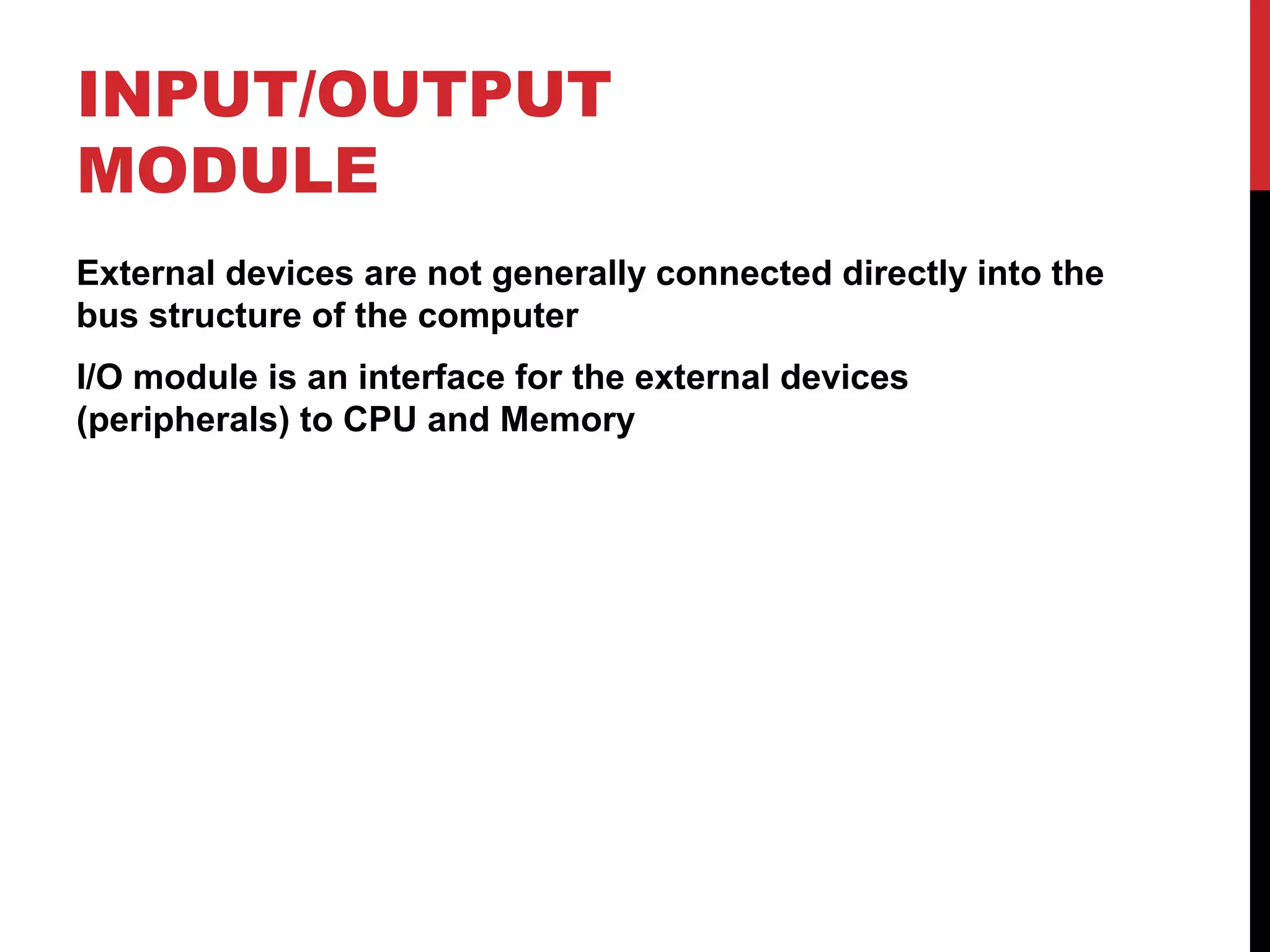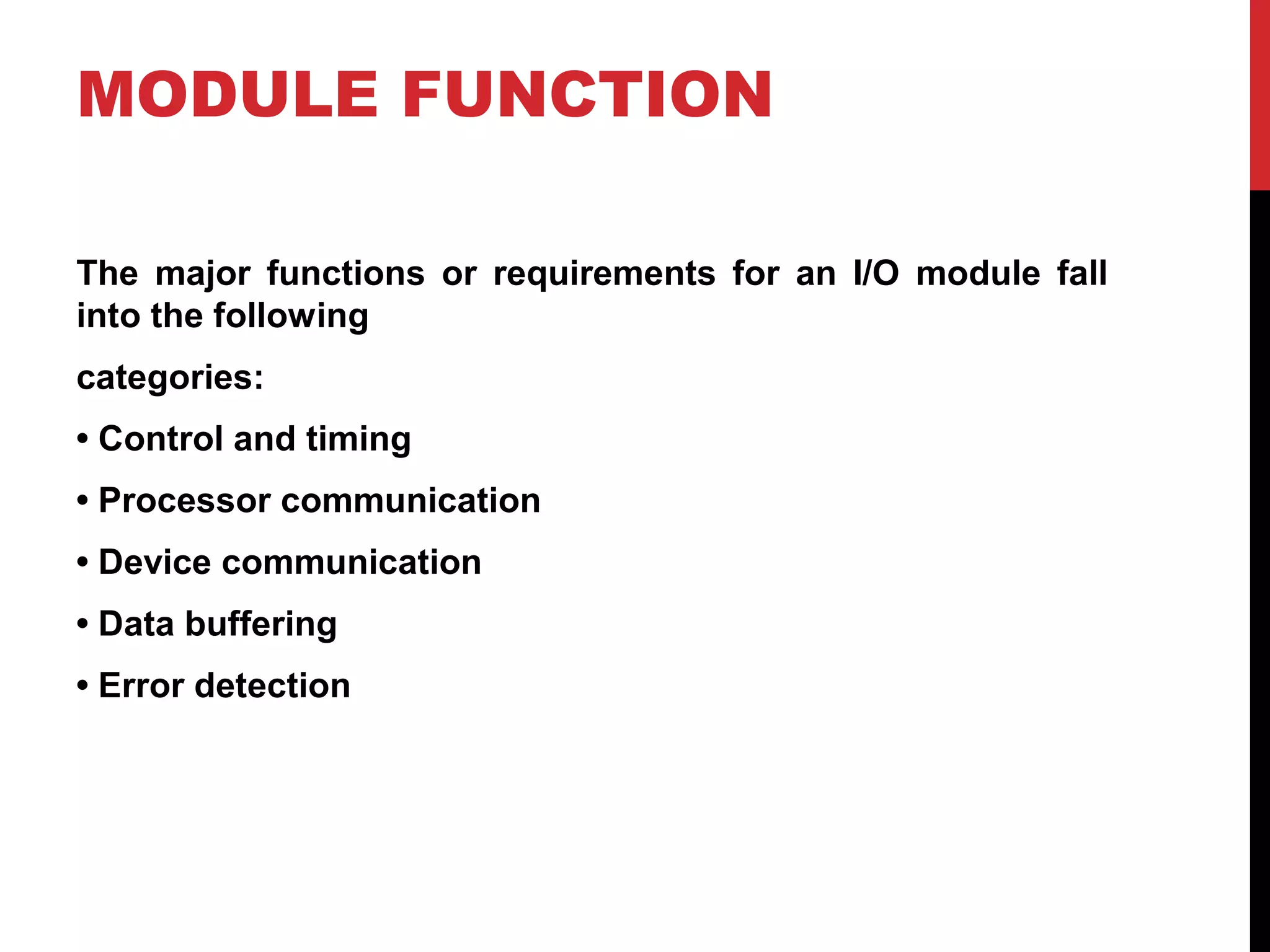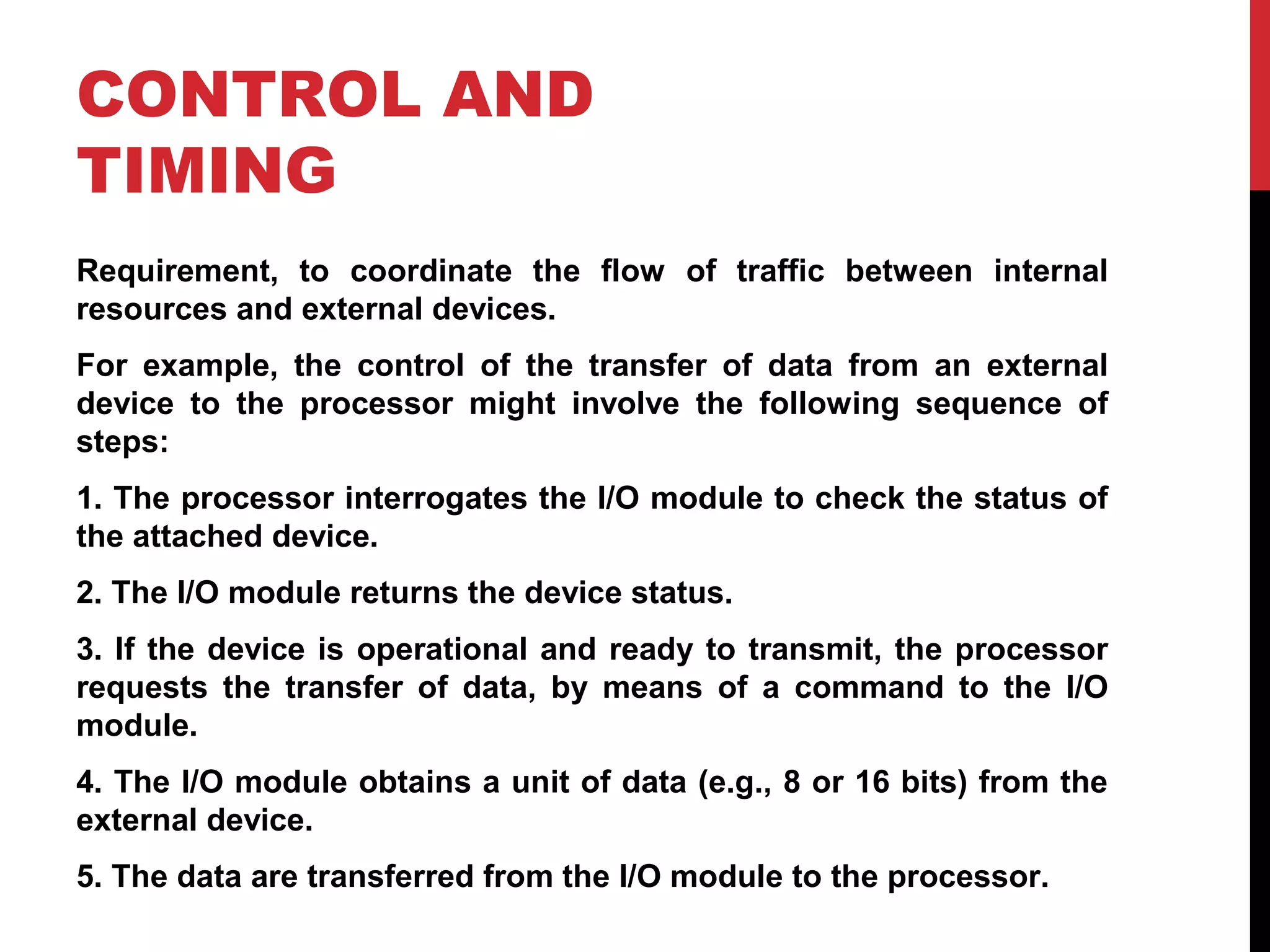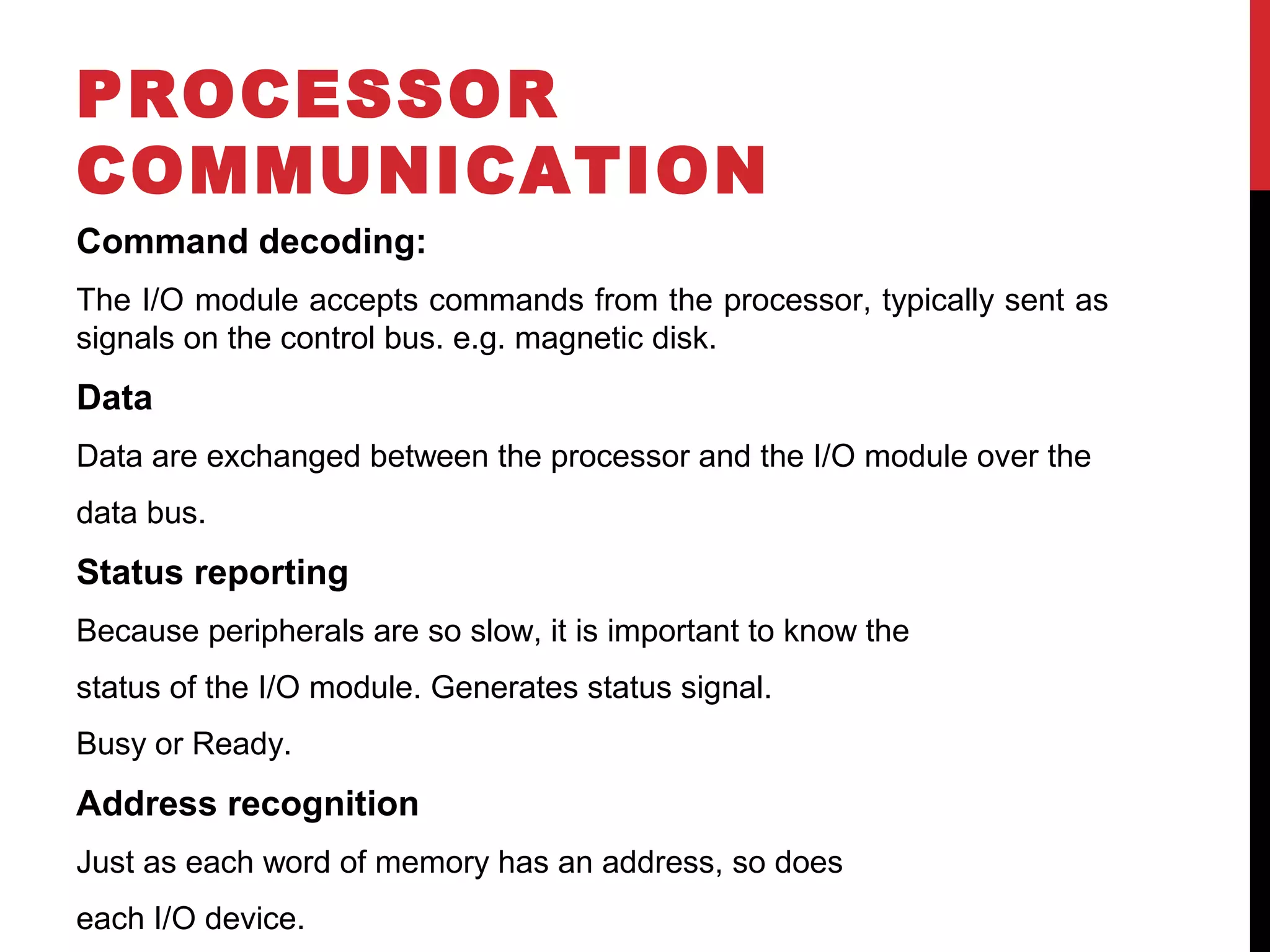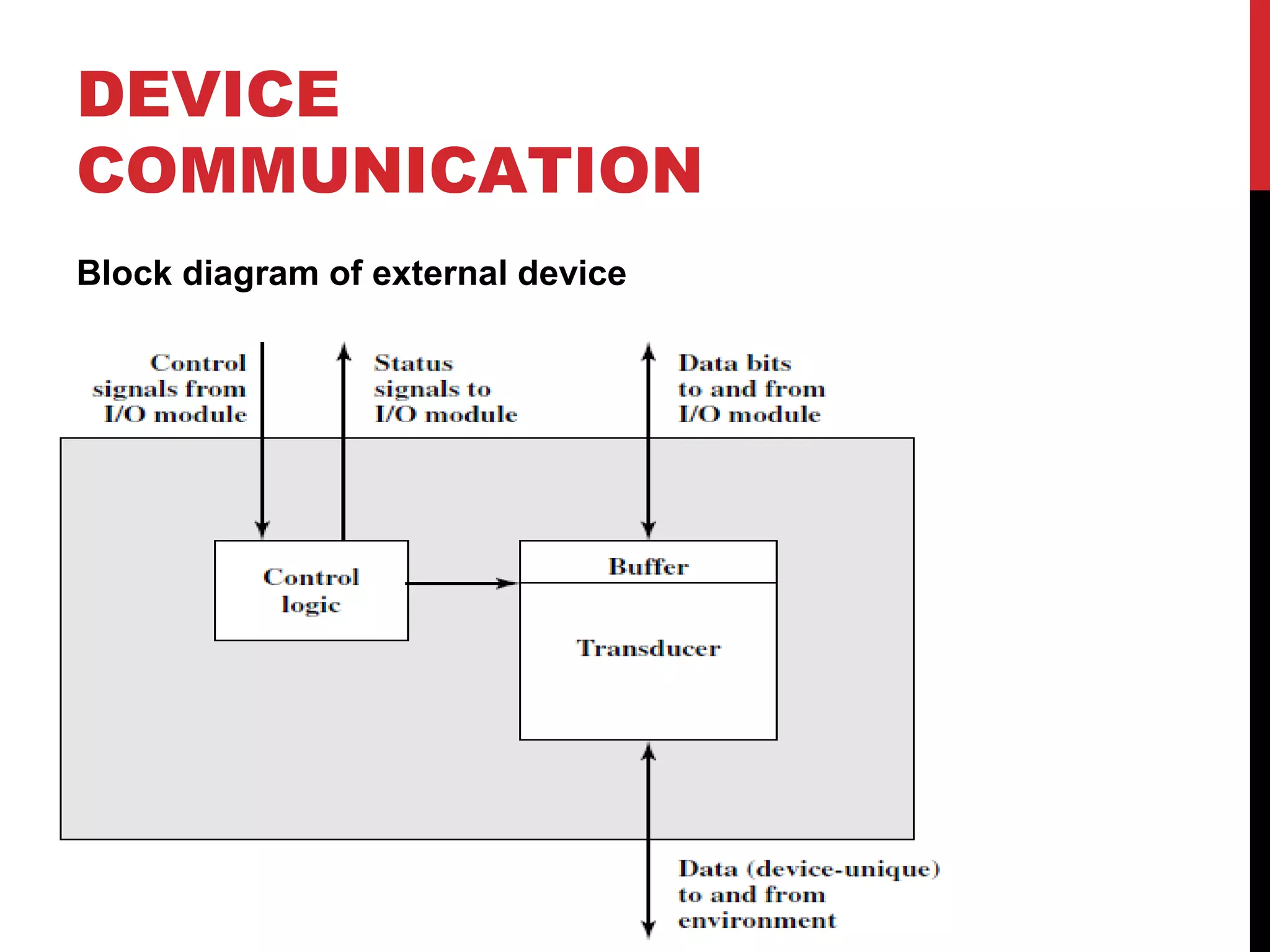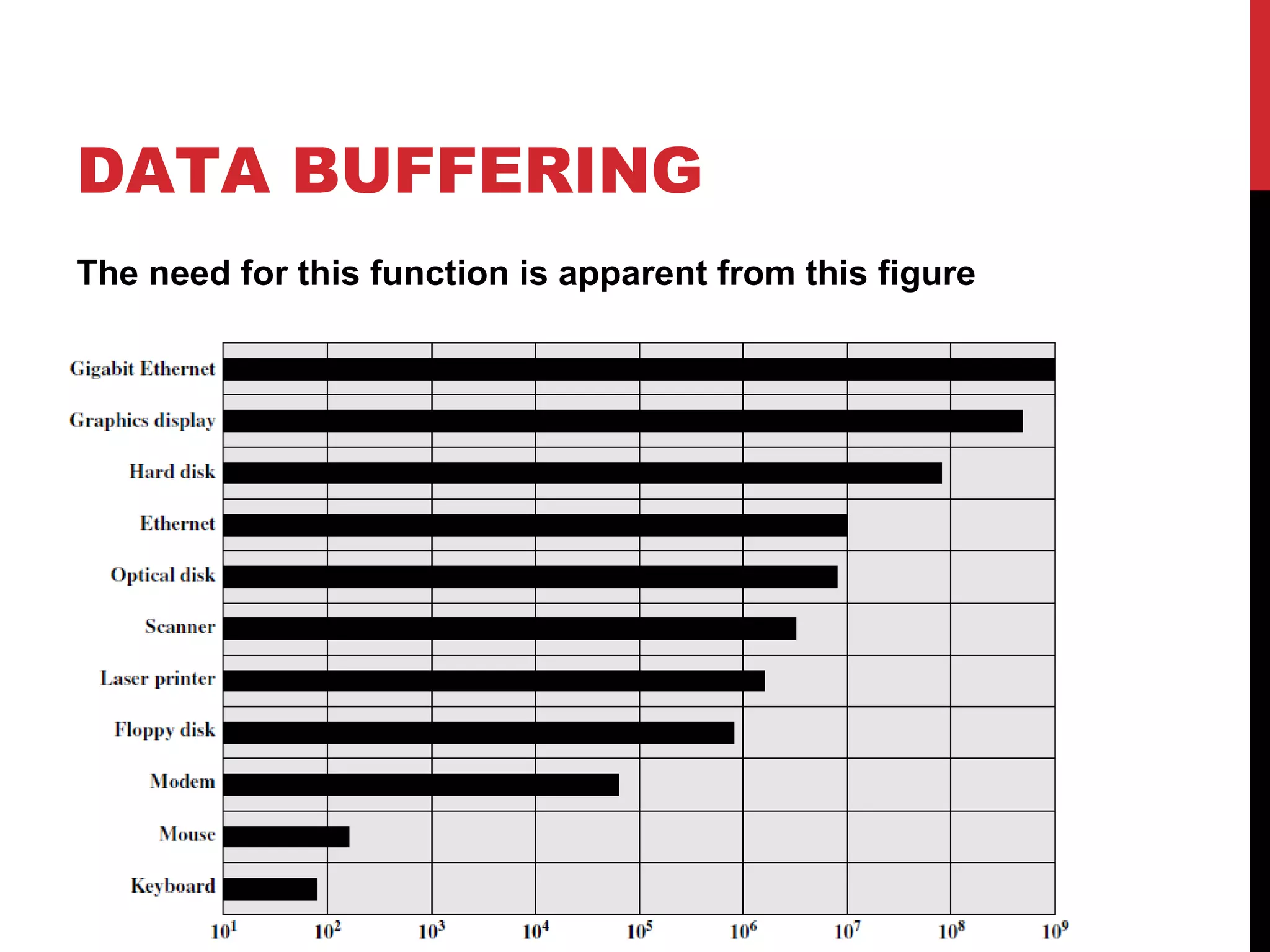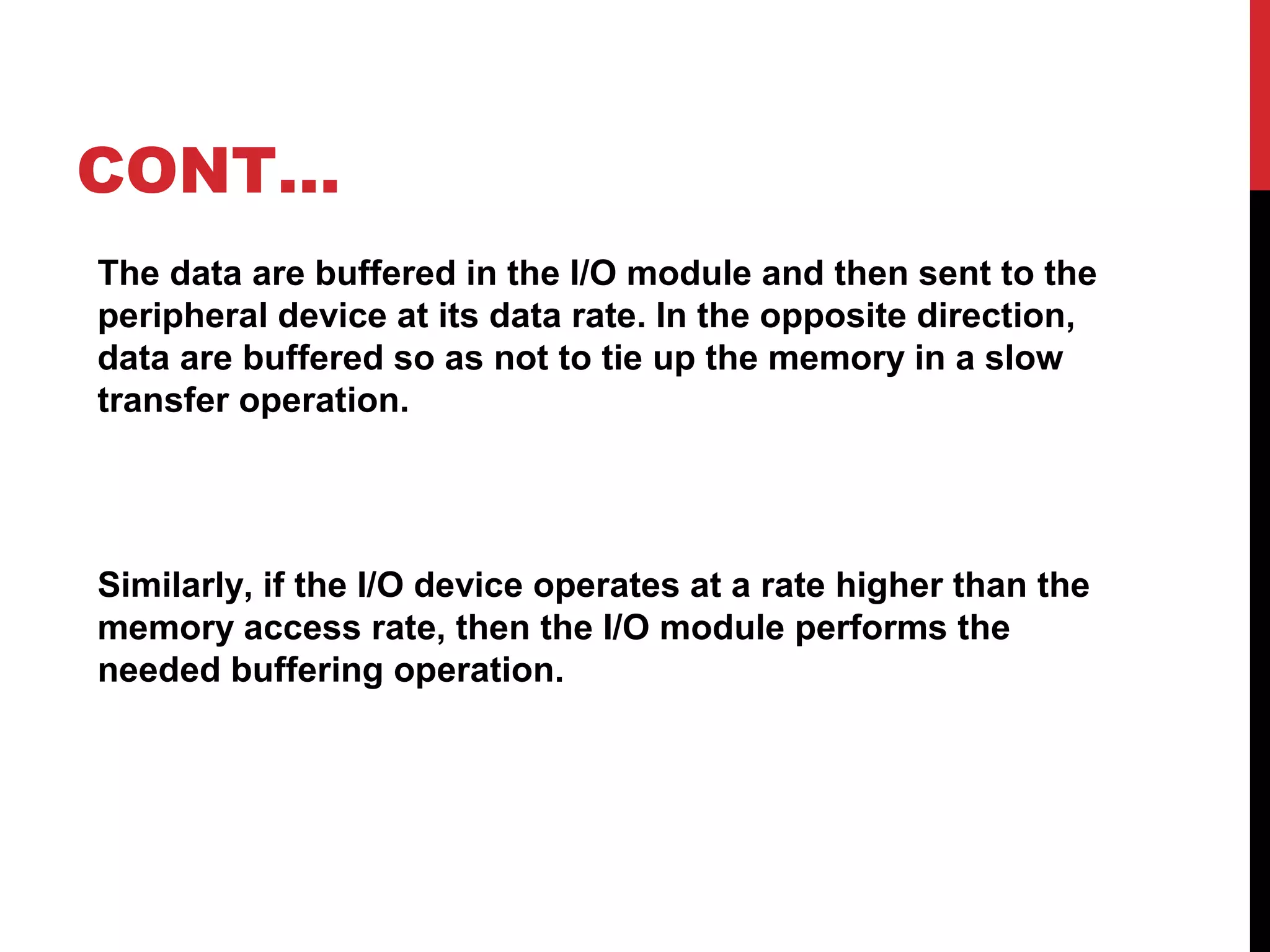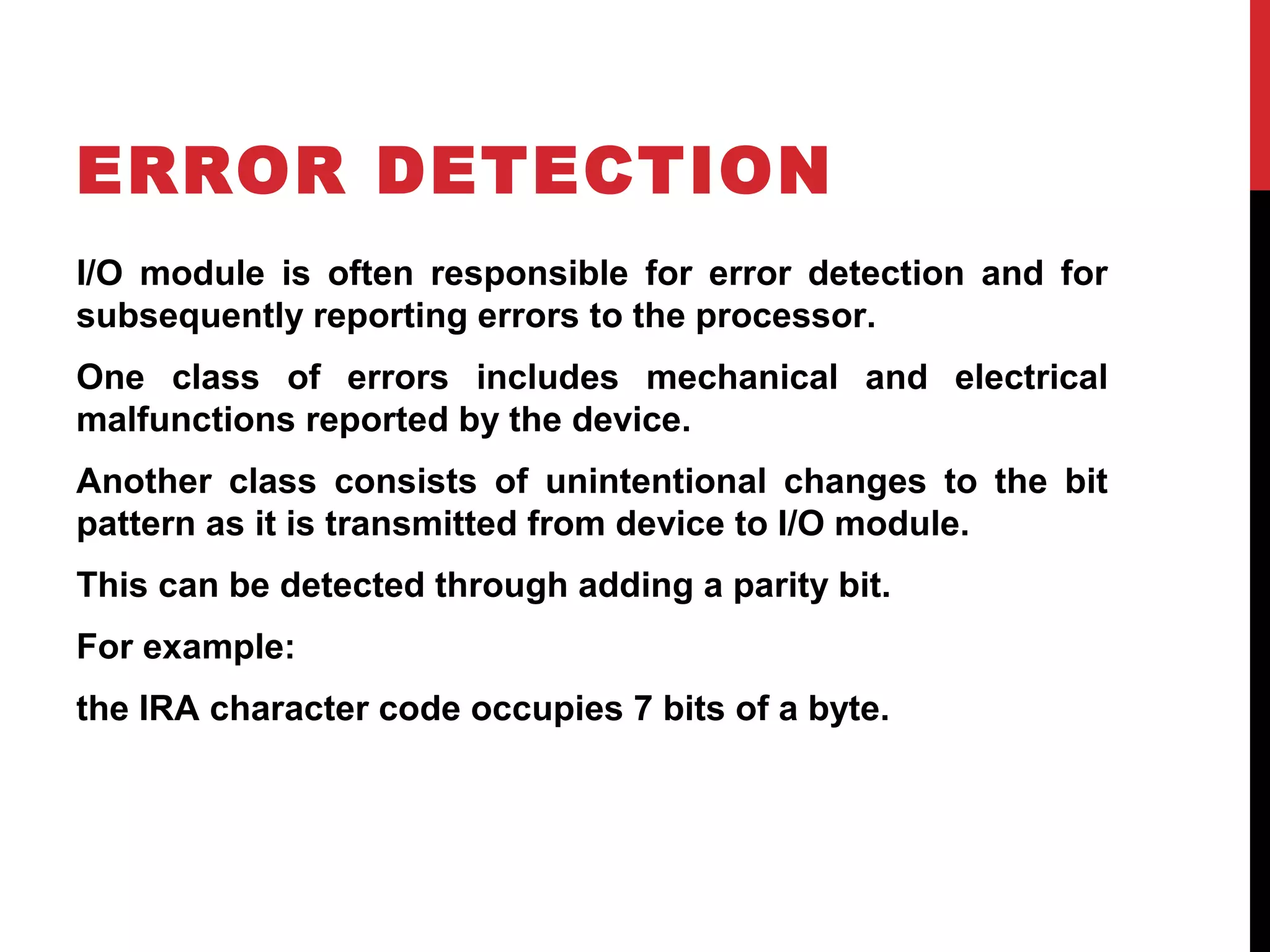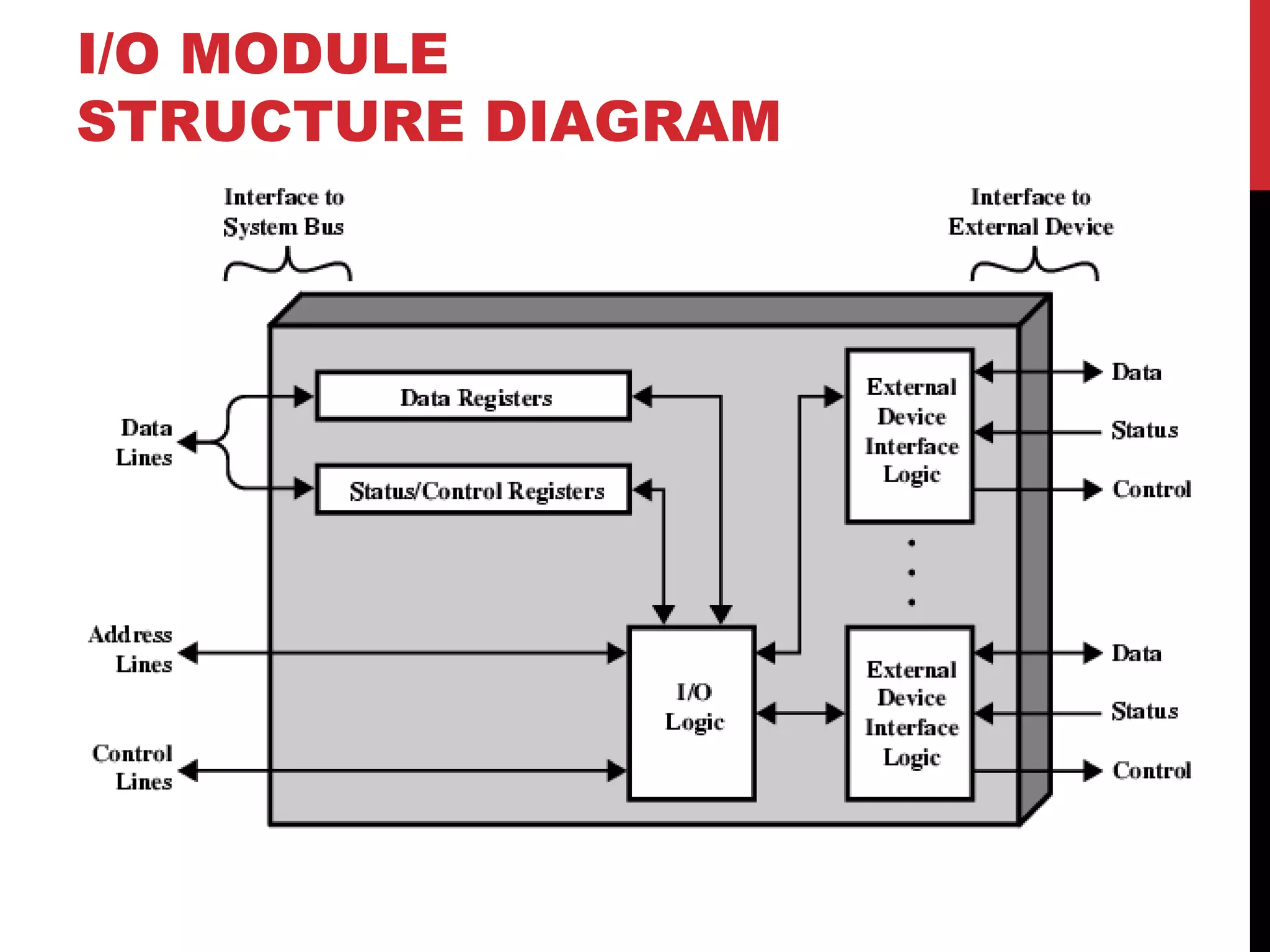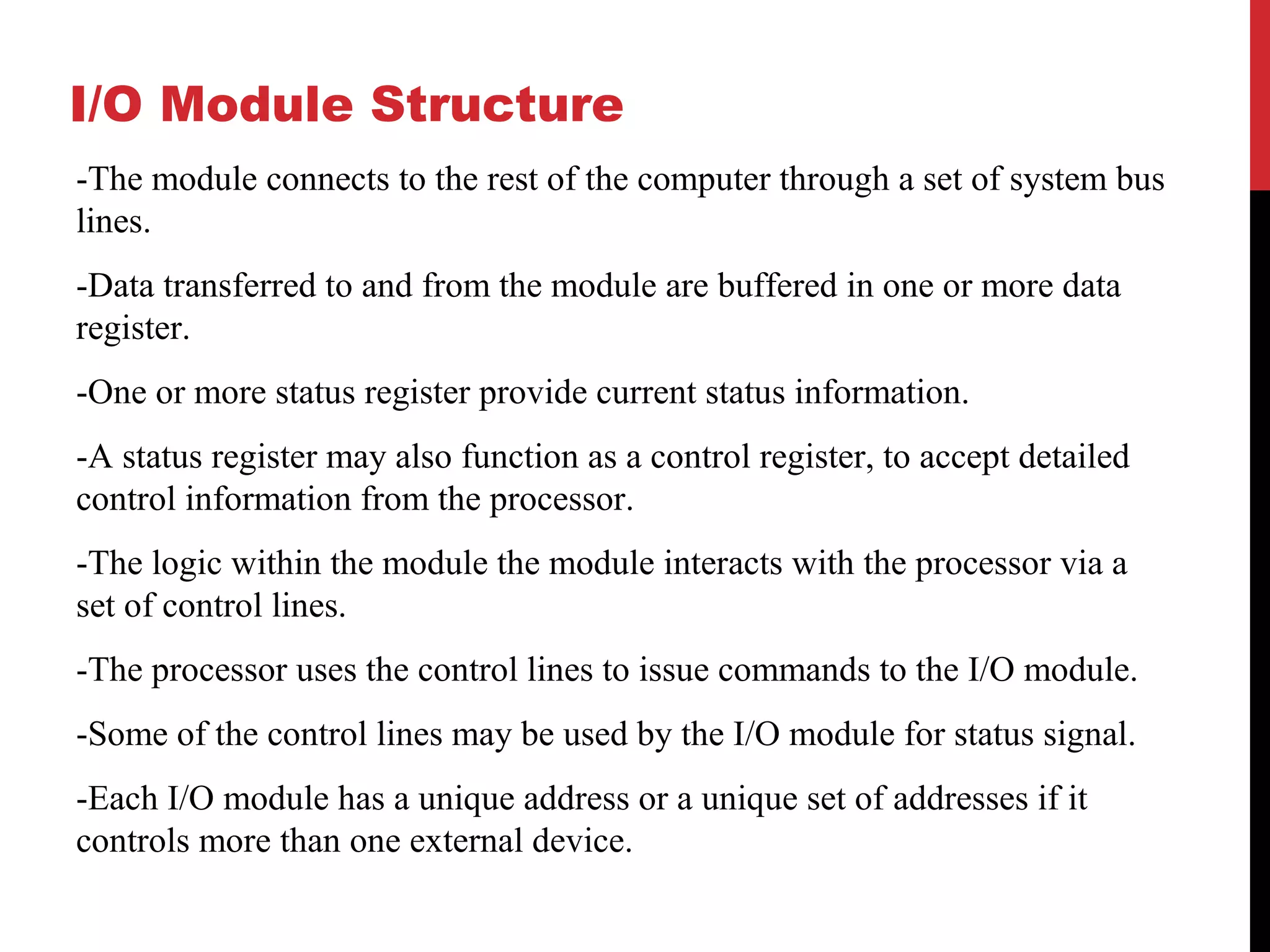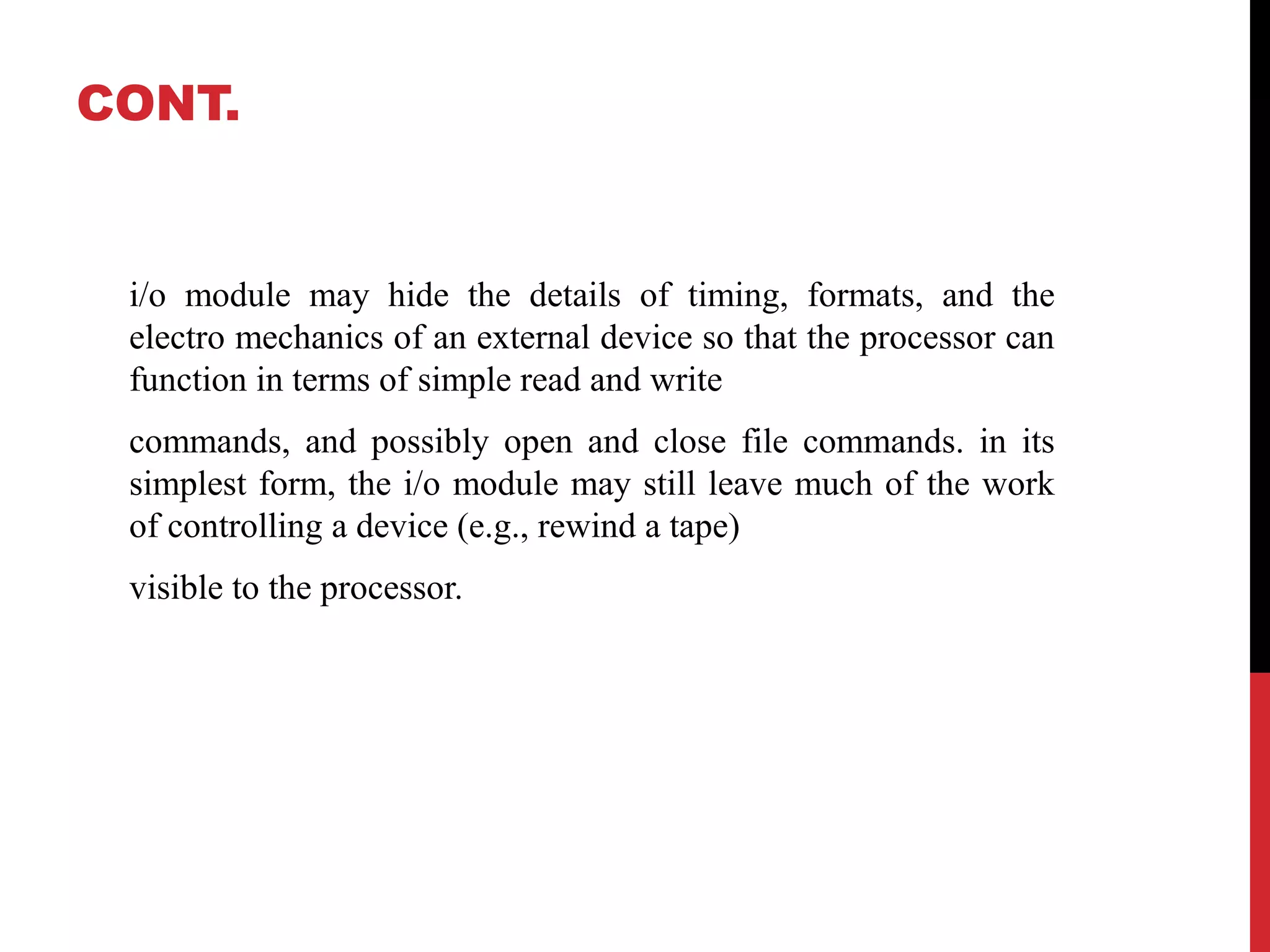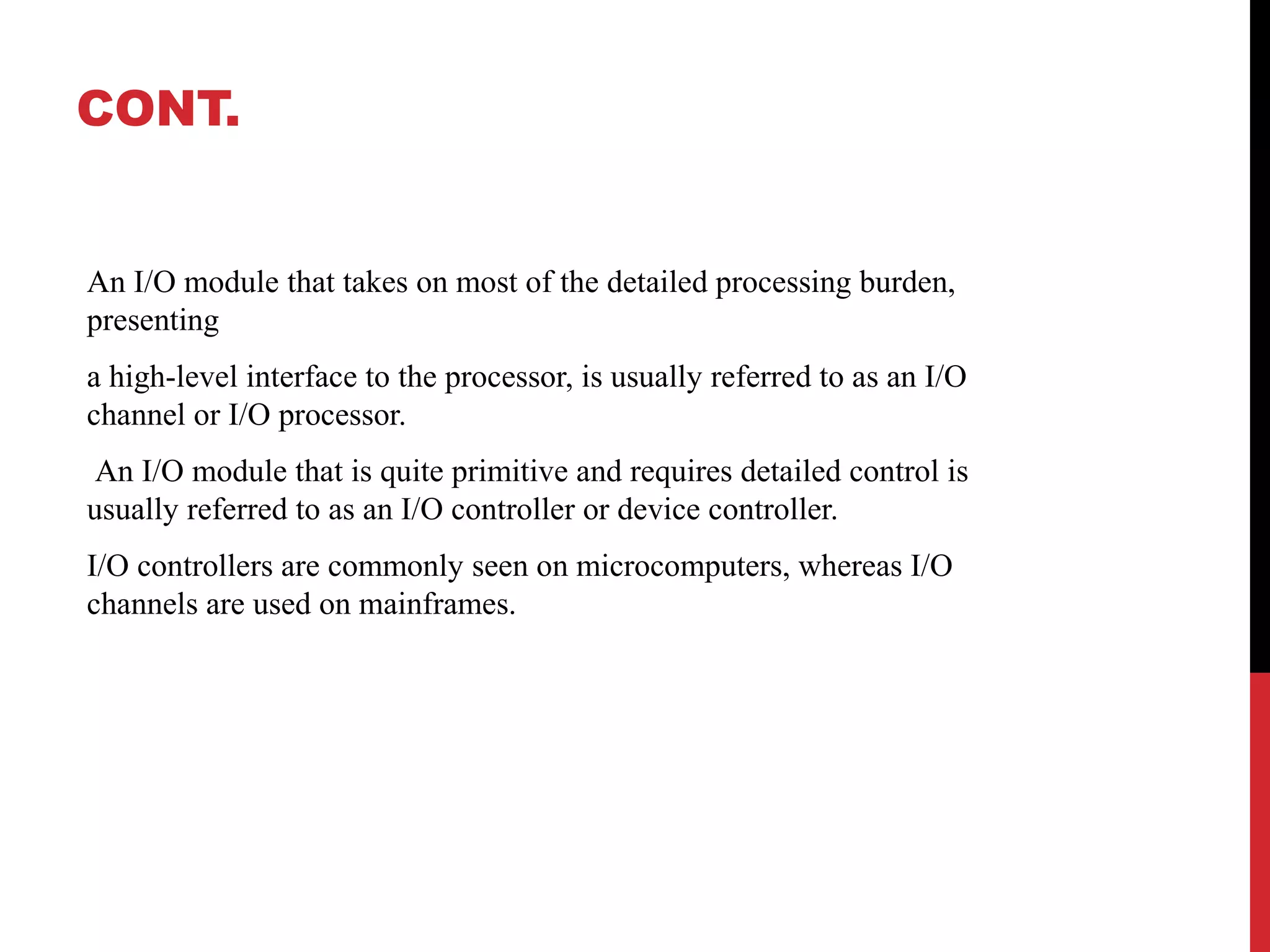Input/output modules are critical components that allow computers to interact with external devices. I/O modules serve as an interface between peripherals and the CPU/memory. They perform important functions like control and timing of data transfers, communication with the processor and devices, buffering data, and error detection. I/O modules connect to the system bus and contain data buffers, status registers, and logic to interact with the processor via control lines. This allows external devices like disks and tapes to connect indirectly to the computer and be managed through simple read/write commands.
